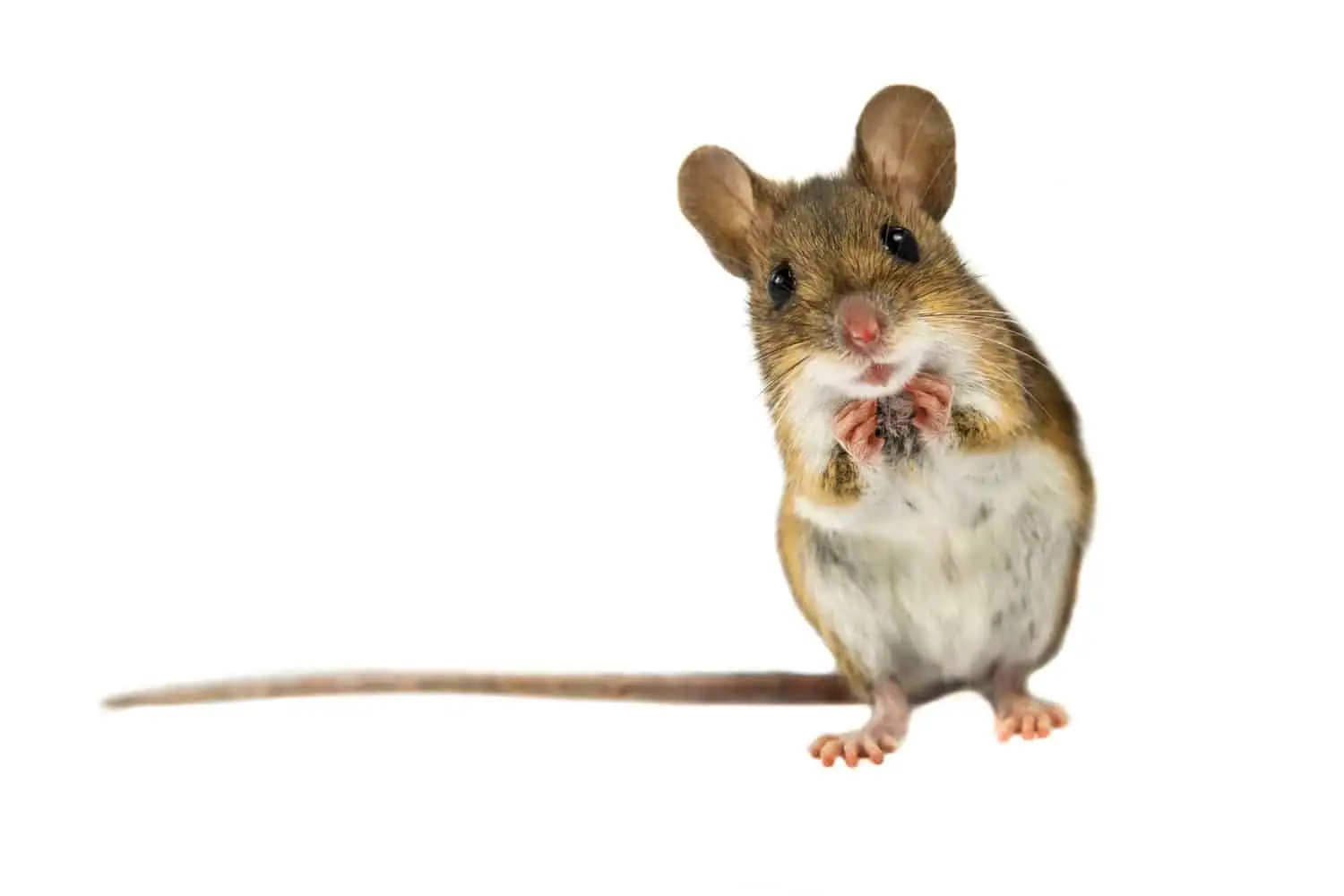Although it’s not what we prefer to focus on, mice and other rodents are an inescapable aspect of the camping lifestyle. That means you’ll need to take certain steps to make sure they don’t wreak havoc on your camper or RV.
To determine how to keep mice out, we gathered tips from skilled exterminators, as well as regular folks who enjoy long-term RVing. We also drew on our own experiences to provide you with the most comprehensive guide possible.
Some of the information we gathered might seem obvious, especially if you’ve had to deal with pest control in the past. However, a few of these tactics might surprise you.
How can you tell if rodents have taken up residence in your camper? Some obvious signs include droppings on floors and countertops; holes in cushions; or nests.
A nest will usually be tucked into an out-of-the-way spot, such as a closet or drawer. It may consist of clumps of hair or pet fur, cushion stuffing, small food items, or other debris.
Once you notice these signs, it’s time to take action. If you allow the problem to escalate, mice can destroy the wiring and water lines in your RV, leading to pricey repairs.
Table Of Contents
- 1. Keep It Clean
- 2. Take Stock Of Food Supplies
- 3. Keep Doors And Windows Closed
- 4. Check Beneath The Rig
- 5. Inspect The Slides And Rooftop Components
- 6. Light It Up
- 7. Set Metal Rings Around Tires
- 8. Use Repellent
- 9. Set Traps
- 10. Consider Poison
How To Keep Mice Out Of Camper Or RV (Ultimate Guide: With 10 Tips)
Although infestations are more common during the colder months when the rodents are seeking a warm place to take shelter, they can occur at any time of the year. Let’s take a closer look at these pro tips on how to keep mice out of your RV.
1. Keep It Clean
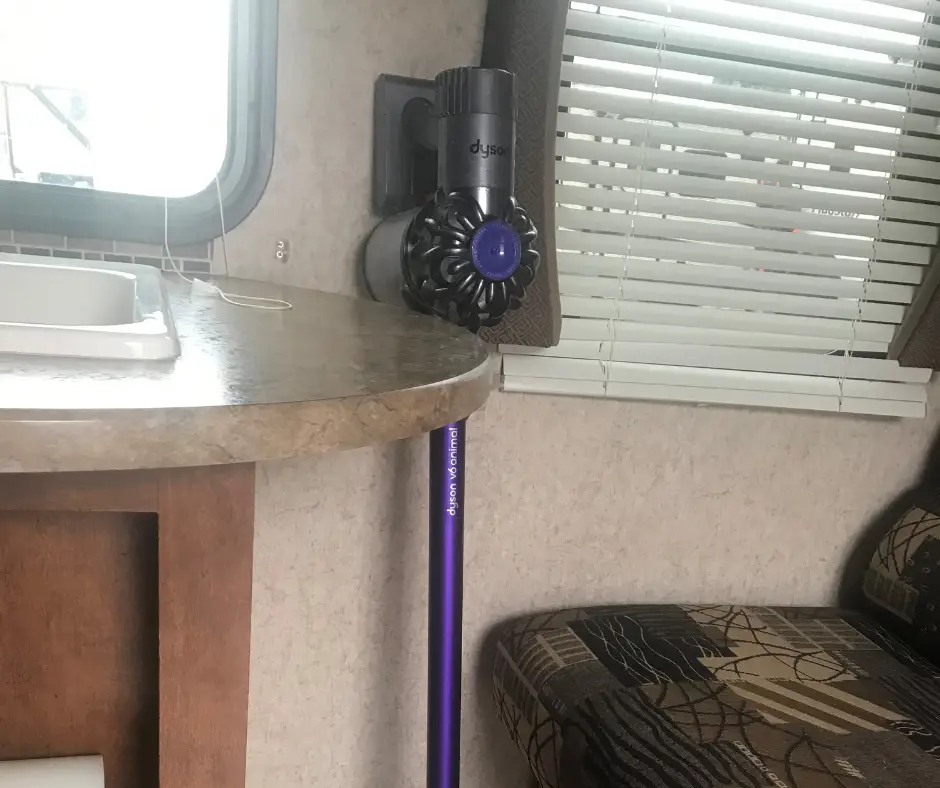
The first rule of camping is to keep your living space as clean as possible. This is the case even if you aren’t actively trying to keep mice out.
Dust and vacuum as often as time allows, and wash linens and towels on a regular basis. We would recommend making the bedroom areas no-food zones, just to cut back on the amount of space that might get littered with crumbs. For more advice on food maintenance, see our next tip below.
2. Take Stock Of Food Supplies
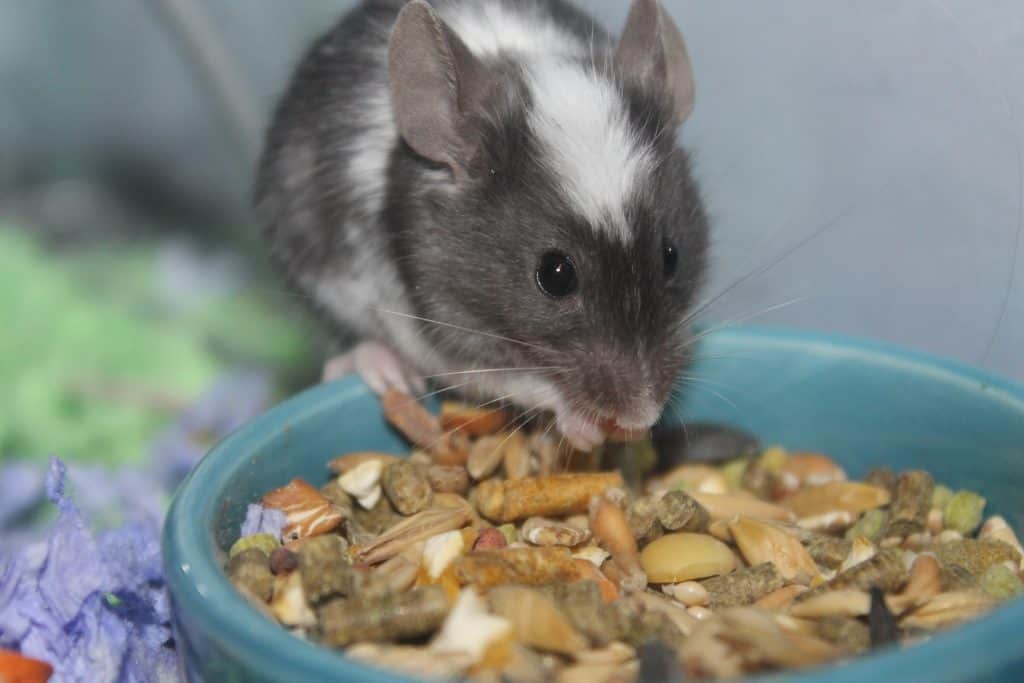
Rodents are extremely adept at chewing through paper, cardboard, or even soft plastic containers. Look through your cupboards for any containers that fall into these categories and inspect them for damage.
If you suspect that a mouse might have gotten to the contents, throw the whole thing out. If the container looks to be intact, transfer the contents to a glass or metal container with a tight-fitting lid.
The following foods are particularly vulnerable to rodent damage when stored in their original packaging:
- Powdered coffee creamer
- Pasta
- Sugar
- Flour
- Dried fruit
- Potato chips
- Nuts
- Granola bars
3. Keep Doors And Windows Closed
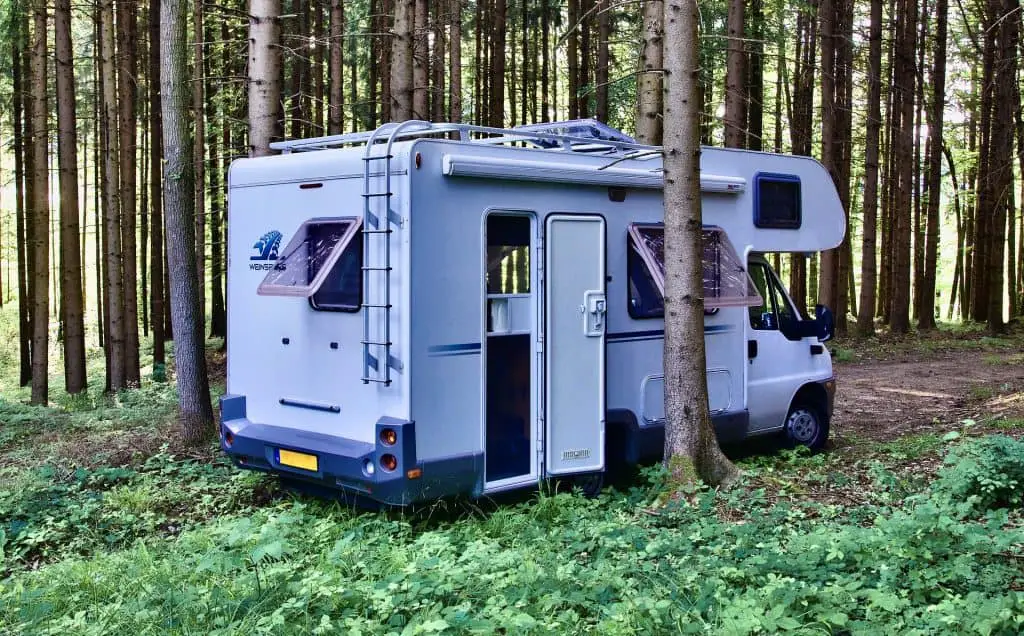
You might not pay a lot of attention to this, especially in the heat of summer, but it’s important to close doors firmly behind you every time you go in and out. Otherwise, you’re inviting pests to come in and set up camp.
Storage doors provide another easy entrance point. Inspect any interior and exterior compartments and make sure the doors haven’t been left ajar.
Now would also be a good time to make sure the door and window gaskets are in good shape. Remember: mice can squeeze through openings no bigger than a dime. It’s up to you to seal your windows and doors properly, so you can keep out cold air and unwelcome visitors.
4. Check Beneath The Rig
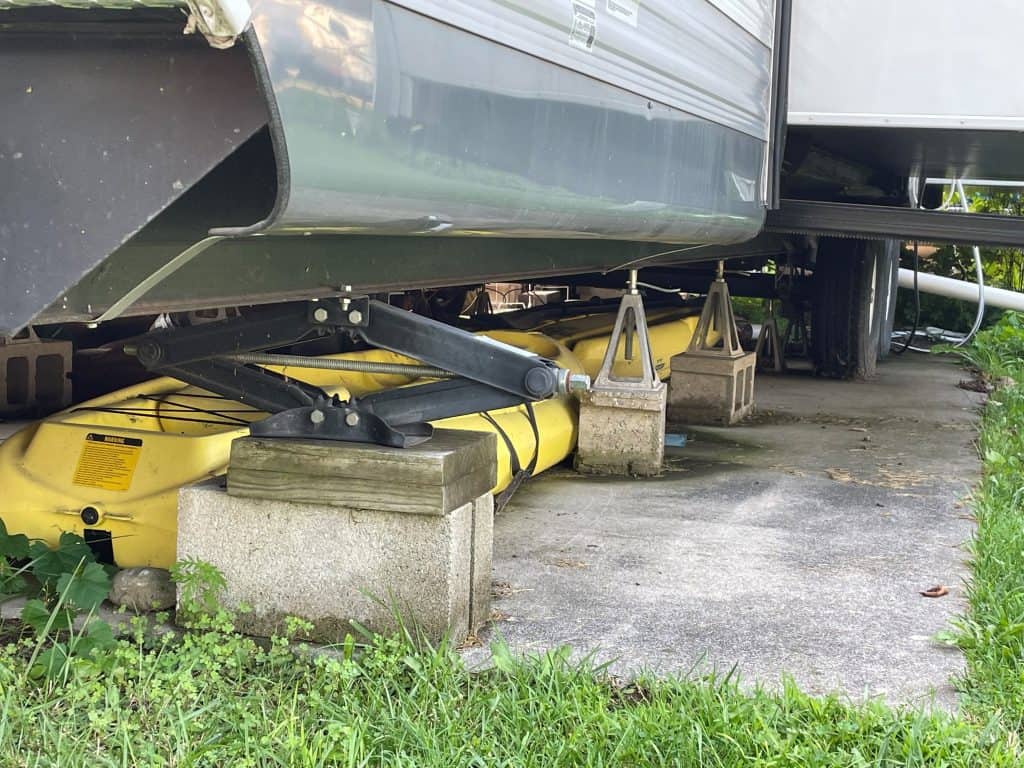
This isn’t our favorite part of the RV experience, but it’s necessary if you want to keep mice away from the sewer and water lines—not to mention the electrical components.
Crawl beneath the camper with a strong flashlight in tow, and check the undercarriage for small holes and cracks. Pay close attention to the spots around the water lines. You can use a caulk or sealant to close up any problem areas.
5. Inspect The Slides And Rooftop Components
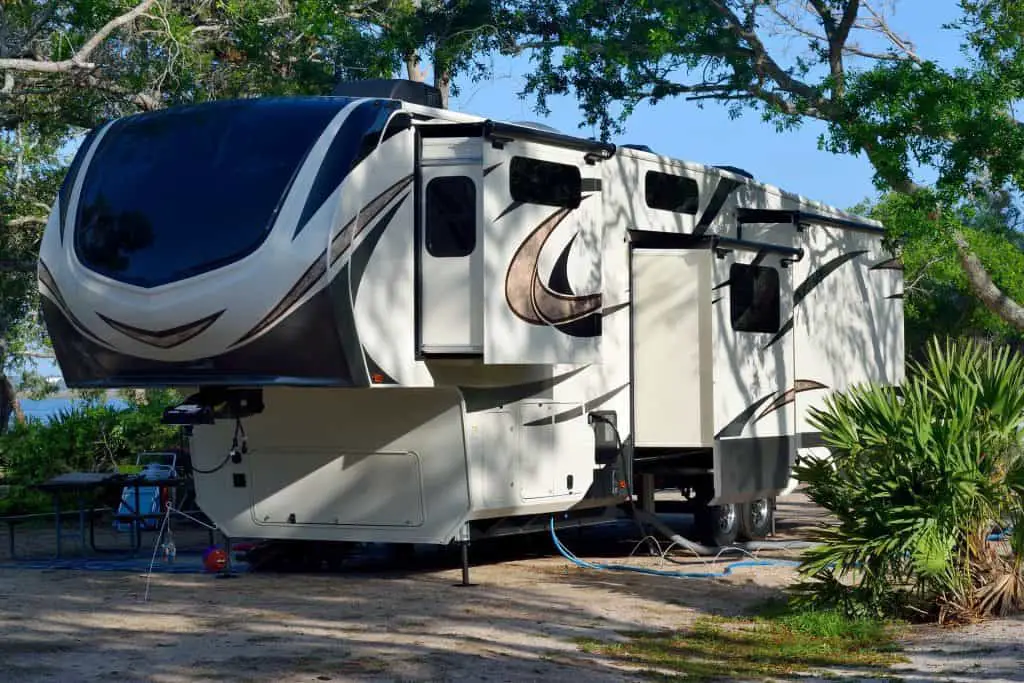
Not every RV has slides, but if yours does, take a close look at the edges of each pull-out. The rubber seals should be seated snugly between the body of the camper and the slide components. The top sections can be especially problematic, so be sure not to neglect them.
Air conditioners provide another excellent entry point for wily rodents. The plastic housing on the units are prone to cracks that often go unnoticed. If your RV has a roof-mounted AC unit, make sure it’s properly mounted, with no external damage.
6. Light It Up
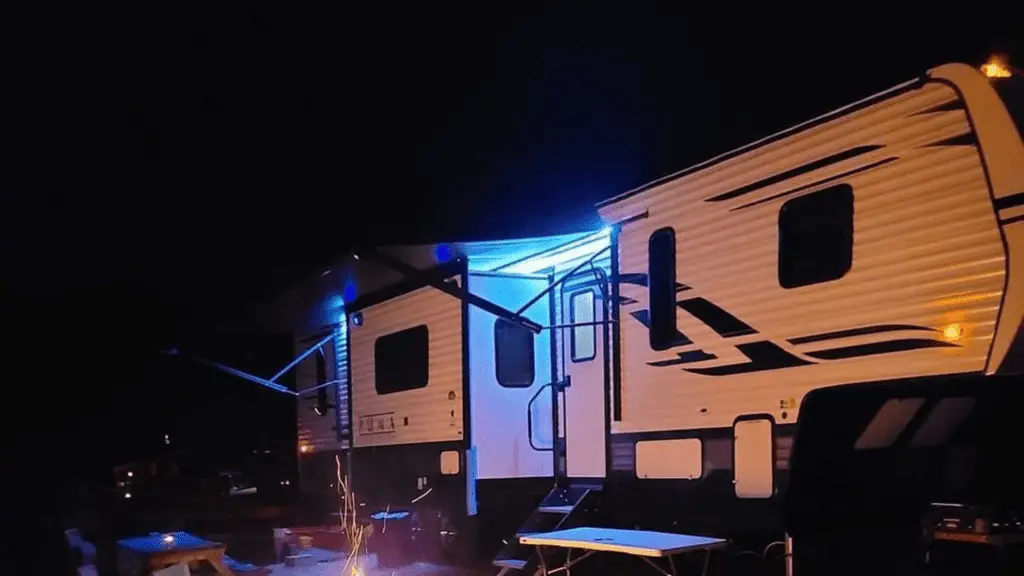
If you can fit it into your budget, invest in some LED lights for the underside of your rig. It might deter mice from creeping too close to your space. Even if it doesn’t work, the soft lighting will provide a nice sense of atmosphere.
7. Set Metal Rings Around Tires

Mice are skilled climbers, so they would have no problem clambering up your tires. However, if you cover each tire with a layer of galvanized sheet metal, they’ll be too slippery for those tiny little feet to manage.
You can purchase sheet metal at your local hardware store, or a big-box outlet such as Lowe’s or Home Depot. Ask one of the employees to cut it into strips for you if you don’t have the tools or inclination to do it yourself.
Set the strips in a ring around each tire and jack stand. They should measure at least 10 inches tall, with no visible gaps. These barriers will prevent rodents from gaining access to your rig through the wheel wells.
8. Use Repellent
All-natural rodent repellent is a safe, humane, and environmentally friendly way to keep mice out of your camper. We’ve used this method for our travel trailer in the past and found it to be quite effective.
Fresh Cab Botanical Rodent Repellent is our go-to option. The product consists of scented pouches that deter rodents from nesting in your living space. The non-toxic material is made with balsam fir oil, and a single pouch can protect up to 8 square feet of floor space for up to 30 days.
Make sure to remove the plastic wrapper before placing the pouch in the area where you suspect rodent activity. Once the pouches are in place, you can replenish them with extra balsam fir oil to extend their shelf life.
9. Set Traps

If you don’t have a problem with actually killing the tiny intruders once they’ve set up camp, traps are a fast and efficient way to deal with them. They’re also inexpensive, and some are even reusable.
Here’s the rundown on the most common mouse traps out there.
Box Traps
This humane option allows you to trap the mouse inside a box after baiting it with food. Once it’s inside, it can’t escape until you release it back into the wild.
The issue with box traps is that there’s always a chance the mouse will make its way back to your camper once you’ve released it. Some people get around this by throwing the entire trap away once they’ve captured the mouse. However, since box traps are pricier than most alternatives, this isn’t the most cost-effective way to handle the problem.
Spring-Loaded Traps
You’ve probably seen these traps before, even if you’ve never used one. They consist of a spring-driven arm mounted on a small rectangular piece of wood. Just open and set the arm, place a smear of peanut butter or a small piece of cheese on the lever, and place the trap in an out-of-the-way spot. When the mouse trips the lever, the spring will snap, killing the mouse instantly (if you’re lucky).
Since these traps are so cheap, there’s no need to empty them. We would suggest throwing the entire thing away, mouse and all, once the trap has done its work.
Electric Traps
Electric traps work by delivering a rapid electric shock to the trapped rodent. They have aesthetic advantages, since you never have to touch or even see the dead mouse, but they’re also expensive.
Glue Traps
These are easy to set up, as all you need to do is remove the backing to reveal the super-sticky trap component.
Glue traps are also set at a low price point.
However, it can take a long time for the mouse to meet its end once it’s made its way into the trap. We think these glue traps are a better choice for insects than for rodents.
10. Consider Poison

As a last resort, you can set out rat poison to rid yourself of your pest problem. We don’t recommend this unless you have no other choice, especially if you have pets or small children in your party. However, there’s no denying the effectiveness of the method.
When the mice eat the poison, they return to their hideaway, where they will soon perish. Once this happens, you won’t have to worry about them destroying your camper, but unless you know exactly where those bodies are, you may have to contend with a foul odor for a while.
Best of luck, and happy camping!
Check our our article on: (10 Steps) How To Winterize An RV Or Camper For Safe Storage

